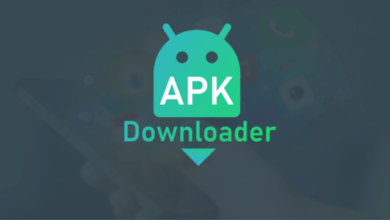Understanding Fintech Software: Types and Key Features

The financial technology (fintech) sector has seen unprecedented growth in recent years, driven by advancements in technology and changing consumer expectations. Central to this revolution is fintech software, which enables innovative financial services that are more efficient, accessible, and user-friendly. This article explores the various types of fintech software and their key features.
Types of Fintech Software
Fintech software encompasses a broad range of applications designed to facilitate financial services. Here are some of the most prominent types:
Mobile Banking Apps
These applications allow users to conduct banking activities via their smartphones. Functions include checking account balances, transferring money, paying bills, and depositing checks using mobile capture technology.
Examples: Chime, Revolut, N26.
Payment Processing Systems
These systems handle electronic payments, ensuring secure and efficient transactions. They cater to e-commerce, point-of-sale (POS) systems, and mobile payments.
Examples: Square, Stripe, PayPal.
Peer-to-Peer (P2P) Lending Platforms
P2P lending software connects borrowers directly with individual lenders, facilitating personal and business loans without traditional banking intermediaries.
Examples: LendingClub, Prosper.
Robo-Advisors
Automated investment platforms that provide financial advice and portfolio management using algorithms and artificial intelligence. They offer low-cost, personalized investment strategies.
Examples: Betterment, Wealthfront.
Insurtech Solutions
Software designed to improve and automate the insurance industry. This includes digital platforms for purchasing insurance, managing policies, and processing claims.
Examples: Lemonade, Policygenius.
Blockchain and Cryptocurrency Platforms
These platforms support the use of cryptocurrencies for transactions, investments, and other financial services. Blockchain technology ensures secure, transparent, and immutable records.
Examples: Coinbase, Binance.
Regtech Solutions
Regulatory technology software helps financial institutions comply with regulatory requirements more efficiently. It includes tools for monitoring transactions, reporting, and managing risk.
Examples: ComplyAdvantage, Trulioo.
Personal Finance Management (PFM) Tools
Applications that help users manage their personal finances by tracking spending, creating budgets, and offering financial insights and advice.
Examples: Mint, YNAB (You Need A Budget).
Trade and Investment Platforms
Software that facilitates online trading and investment in stocks, bonds, ETFs, and other securities. These platforms often provide tools for market analysis and automated trading.
Examples: Robinhood, E*TRADE.
Loan Origination and Management Systems
Software that automates the loan application, approval, and management processes. It streamlines workflows for lenders and improves the borrower experience.
Examples: Blend, Ellie Mae.
Read also: The Role of Technology in Modern Share Trading Platforms
Key Features of Fintech Software
Each type of fintech software has specific features designed to meet the needs of its users. However, certain key features are common across various fintech applications:
User-Friendly Interface
An intuitive, easy-to-navigate interface is crucial for fintech software. Users should be able to access and utilize features without extensive training. This includes mobile-optimized designs for applications accessed on smartphones and tablets.
Highly functional backo-office
The core banking system serves as the foundation for every fintech software. It comprises an engine and operator interface, enabling integration with various service providers via APIs. This system effectively manages clients and transactions, generates reports, and performs numerous other functions essential to fintech operations.
Security and Data Protection
Security is paramount in fintech applications. Features such as encryption, multi-factor authentication (MFA), biometric verification (e.g., fingerprint or facial recognition), and secure access controls protect user data and financial transactions.
Integration Capabilities
Fintech software often needs to integrate with other systems, such as banks, payment gateways, accounting software, and customer relationship management (CRM) tools. Robust API support ensures seamless integration and data exchange. With the assistance of APIs and a dependable core banking platform, you can seamlessly integrate with various payment services and Banking as a Service providers, such as card issuers, foreign exchange (FX) providers, and providers offering different payment types.
Real-Time Processing
Real-time data processing and transaction capabilities are essential for timely financial decision-making. This feature is especially important in payment systems, trading platforms, and mobile banking apps.
Personalization and Customization
Personalization features use data analytics and AI to offer tailored financial advice, product recommendations, and user experiences. Customizable interfaces and workflows allow businesses to adapt the software to their specific needs.
Compliance and Reporting
Compliance with regulatory standards is a critical feature. Fintech software should include tools for regulatory reporting, transaction monitoring, and compliance management to help businesses adhere to legal requirements.
Data Analytics and Reporting
Advanced data analytics capabilities provide insights into user behavior, financial trends, and operational performance. Customizable reporting tools help users generate detailed financial reports and analytics.
Automation
Automation features streamline repetitive tasks and processes, such as transaction processing, loan approvals, and customer service. This increases efficiency and reduces the risk of human error.
Customer Support
Integrated customer support features, such as live chat, AI-driven chatbots, and help centers, ensure users can get assistance when needed. This is crucial for maintaining customer satisfaction and trust.
Scalability
The ability to scale the software to accommodate growing numbers of users and transactions is essential for fintech businesses. Scalable architecture ensures that the software can handle increased loads without performance degradation.
Market Perspectives
The fintech software market is poised for continued growth, driven by several factors:
Increasing Digital Adoption
The global shift towards digital services, accelerated by the COVID-19 pandemic, has increased demand for fintech solutions. Consumers and businesses are increasingly comfortable using digital platforms for financial services.
Technological Advancements
Innovations in AI, blockchain, and big data analytics are creating new opportunities for fintech software. These fintech content creation technologies enable more sophisticated and efficient financial solutions.
Regulatory Support
Regulatory frameworks are evolving to support fintech innovation. Sandbox environments, where new technologies can be tested under regulatory supervision, are becoming more common.
Emerging Markets
Emerging markets present significant opportunities for fintech growth. In regions with limited traditional banking infrastructure, fintech solutions can provide much-needed financial services.
Collaboration and Partnerships
Collaboration between fintech startups and traditional financial institutions is on the rise. These partnerships combine the agility and innovation of fintech with the stability and customer base of established banks.
Conclusion
Fintech software is transforming the financial services industry, making it more efficient, accessible, and user-friendly. From mobile banking and payment processing to blockchain platforms and robo-advisors, the range of fintech software types is vast. Each type comes with a set of key features designed to meet the needs of modern consumers and businesses. As technology continues to evolve and consumer expectations change, the fintech software market is set to grow, offering even more innovative solutions for the financial sector.





